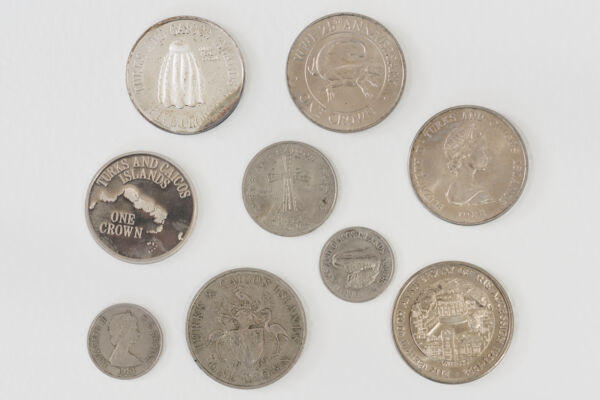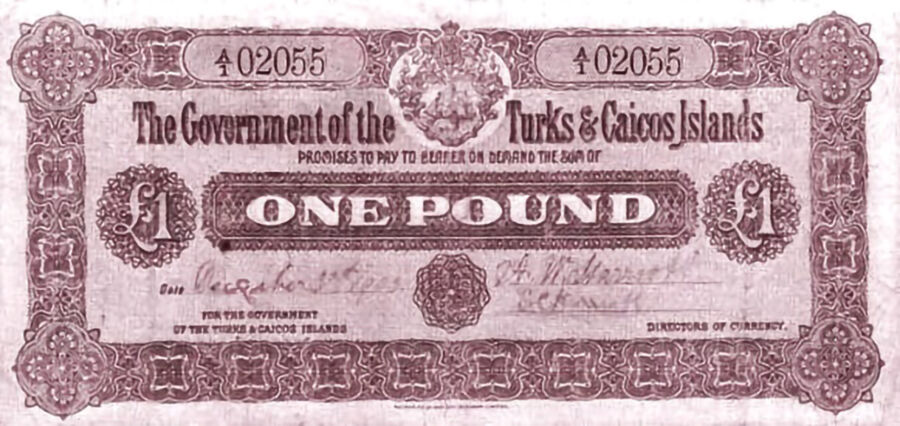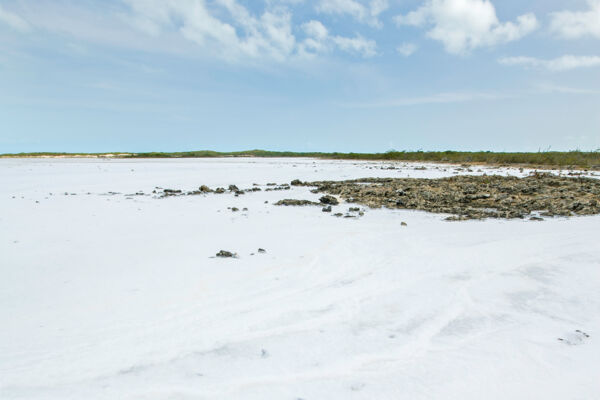The Turks and Caicos Crown

The Turks and Caicos Government mints legal tender collectable coins called crowns, which feature various animals of the islands or the national crest on the reverse, and her late Majesty Queen Elizabeth II on the obverse. These coins’ value is on par with the U.S. Dollar (one crown equals one U.S. Dollar), and they are legal tender in the Turks and Caicos. However, they are generally purchased as tourist souvenirs and not used as actual currency.
For information on exchanging, withdrawing, and spending money (from a tourism perspective), see Turks and Caicos Money, Currency, and ATMs.The Turks and Caicos Crown
Crown coins depict a variety of animals and plants that are indigenous to the islands, including the Turk’s head cactus, the Caribbean spiny lobster, the queen conch, and the Turks and Caicos Islands Rock Iguana.
These coins were issued in quarter-crown, half-crown, one-crown, and five-crown denominations. Some of the earliest Turks and Caicos crowns on the international coin market are from 1969. The 1969 one-crown coin features the Turks and Caicos coat of arms on the reverse.
It is extremely unlikely to be given any Crown coins in change or otherwise encounter crown coinage in general circulation, as crowns today are primarily tourist souvenirs. Crowns can be made from gold, silver, or typical coin metals (such as a nickel alloy).
Historical Currencies of the Turks and Caicos
The Turks and Caicos has used a variety of currencies as legal tender, the most recent being the Jamaican Pound and then the Jamaican Dollar, which was used up until 1973 when the country switched to the U.S. Dollar.
In the past (around the early 1900s), the Government issued its own currency notes. These were pound-denominated banknotes, which today are extremely scarce collector’s items (and worth quite a bit). Notes in five shillings, 10 shillings, and one pound were issued (20 shillings equals one pound). These notes were discontinued after the Great Depression and replaced with Jamaican currency.

‘Mexican’ Silver Dollars (Cartwheels)

In 1838, the ‘Mexican’ silver dollar was authorized as legal tender in the Turks Islands by royal proclamation, though it had already unofficially been circulating in the islands.
Also called cartwheels, these silver coins were used to pay for Turks and Caicos salt bound for the American market.
After the value of silver plummeted, creating a financial crisis in the United States, the Government stopped recognizing the currency and demonetized it in 1880.
Tokens

In the past, tokens were issued by local plantations, salt proprietors, industries, and companies instead of money. These were redeemed for goods at company-owned stores for food and other desired items. J.N. Reynolds, an Irish cattle rancher on East Caicos and salt business magnate, may have been the first to issue copper tokens.
Much like modern gift cards, tokens had the distinct disadvantage of only working as tender at company stores, locking workers into jobs and depriving them of financial independence.
In 1881, the Turks and Caicos Legislature passed a law to prevent payment in tokens and anything other than the current coin of the islands. Like many past and current laws in the Turks and Caicos, it appears that the law wasn’t drafted properly, nor enforced. No company is recorded as having been prosecuted under the ordinance. Workers ended up in the same situation, as companies simply switched to either:
- Laying off workers who didn’t buy from the company store
- Deducting the value of purchases made at the company store from future wages
The West Caicos Sisal Company, founded in 1890 (nearly 10 years after the law was passed), issued tokens to its workers. There is no record it was ever prosecuted by the Government.
